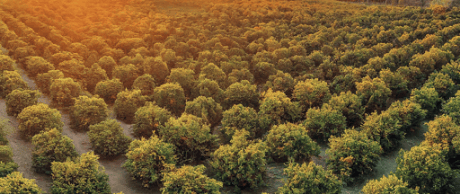Ray of Hope for Citrus Trees: The Australian Finger Lime's Antibiotic Breakthrough
A potential breakthrough in the fight against citrus greening disease with UC Riverside's groundbreaking research on the Australian finger lime
NEWSCITRUS
Jonathan Burton
2/14/20243 min read


A promising breakthrough has been made in the search for a cure to the devastating citrus greening disease, thanks to the discovery of Australian Finger Lime. This finding brings a newfound hope for the citrus industry, as scientists believe that this citrus fruit variety possesses properties that can combat the disease.
UC Riverside researchers may have made a remarkable discovery that could provide a hopeful remedy for the destructive citrus greening disease, also referred to as huanglongbing (HLB). The potential breakthrough is centered on the natural defenses found in the Australian finger lime, offering a ray of hope for our cherished citrus trees.
Under the guidance of Professor Hailing Jin, a renowned expert in plant genetics, the research group successfully discovered a particular gene in the finger lime that provides resistance against HLB. By isolating and extracting this gene, they were able to create an antibiotic that effectively eliminated the disease in young trees under controlled conditions, demonstrating their achievement.
Although the treatment is showing potential and can be used as a spray or injection, it is currently not accessible for consumers to buy. UC Riverside has formed an exclusive partnership with Invaio Sciences for worldwide production and marketing, but its availability depends on government approval for the essential antimicrobial peptide component.
The Australian finger lime, also known as caviar lime, gets its name because of the tiny, round fruit that bursts out when it is cut, offering a strong, citrusy taste. Even though it is quite expensive, this unique fruit is popular in high-end Asian restaurants, much like fish caviar.
Professor Jin is hopeful that regulatory approvals will be quickly granted now that the peptide has been identified. The protein, which comes from a natural source, seems to be safe for human use. Importantly, the antibiotic is not only simple to produce but also durable, maintaining its effectiveness even in high temperatures, reaching as high as 130 degrees.
Nevertheless, Jin advises against hastily proclaiming the treatment as an ultimate solution until extensive trials on fully-grown trees in uncontrolled settings have been conducted. Unfortunately, these trials, initially planned for this spring in Florida, have been postponed due to the persistent obstacles caused by the coronavirus pandemic.
Jin is optimistic about the discovered peptide's potential, which is a major advancement in fighting citrus greening disease. This disease has caused great damage to Florida's citrus industry, making the fruit bitter and green and eventually leading to the death of the trees.
The illness is transmitted by the Asian citrus psyllid, a small insect that feeds on plant sap and was initially discovered in California in 2008. Measures to fight the disease include cutting down infected trees, using chemicals to kill the insects, and using natural predators to manage the psyllid populations.
The University of California's agriculture and natural resources department has created an interactive map to address concerns about areas with high infection rates. In Southern California, especially where Los Angeles, Orange, Riverside, and San Bernardino counties meet, there are many locations with a high risk of infections. To determine how close they are to these areas, residents can enter their address into the interactive map.
Jin suggests that infected trees should be immediately removed because keeping a healthy tree can act as a source for psyllids to transmit the disease. This preventative action is similar to getting rid of a person infected with malaria in order to prevent the spread of disease-carrying mosquitoes.
As we wait for approval and encounter setbacks in conducting field trials, there remains optimism that this discovery may hold the key to protecting our citrus trees from citrus greening disease.
The first successful treatment for a disease that devastates citrus crops has been discovered by UC Riverside, according to a press release.


